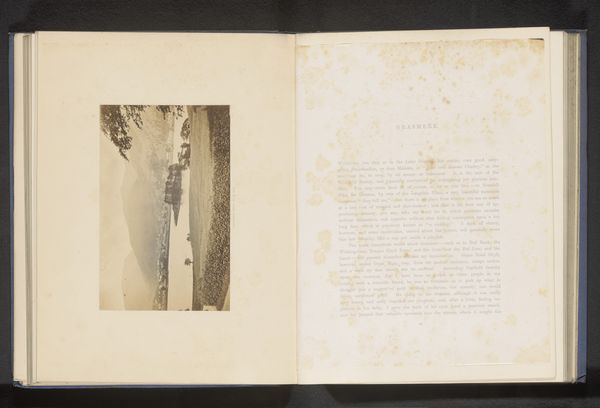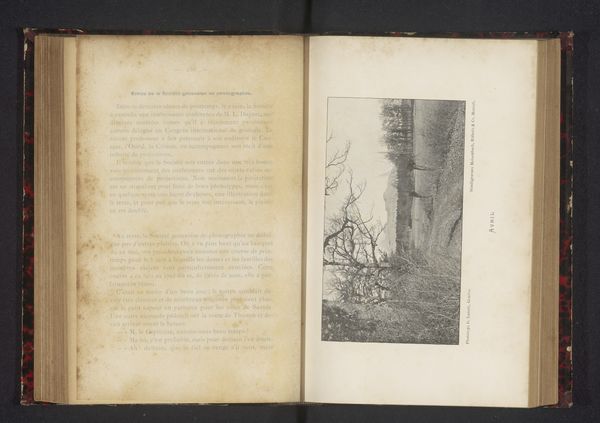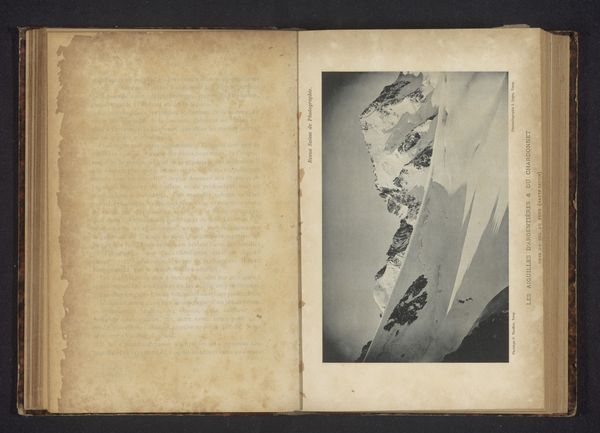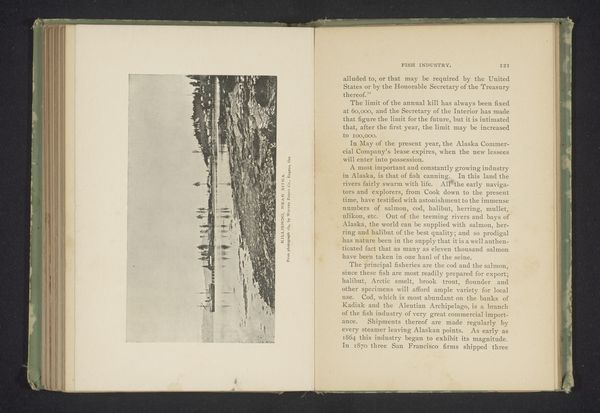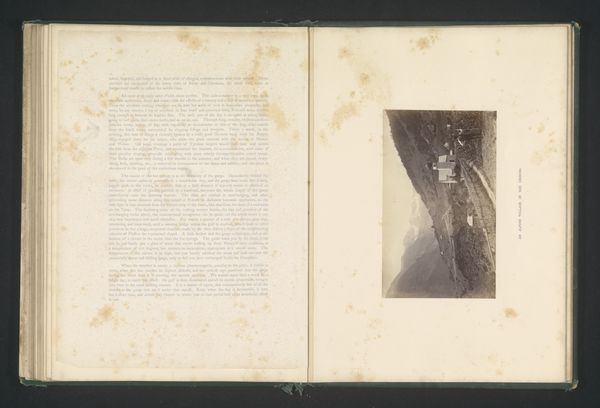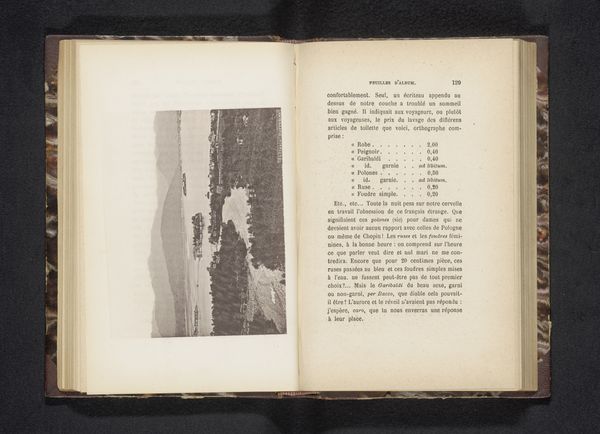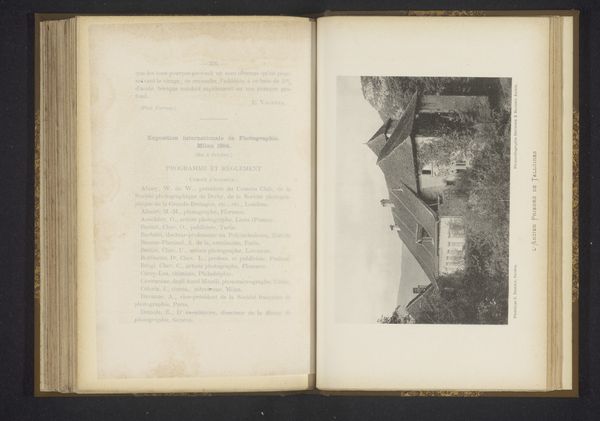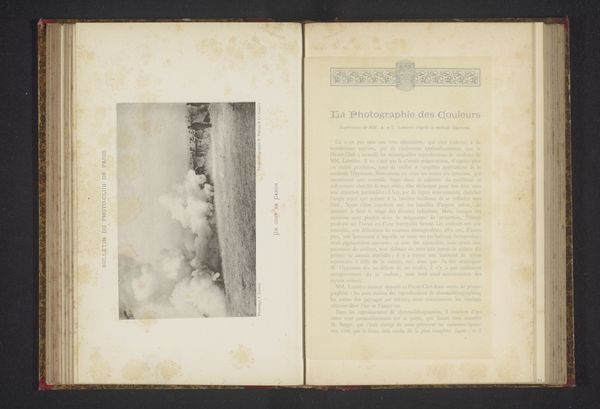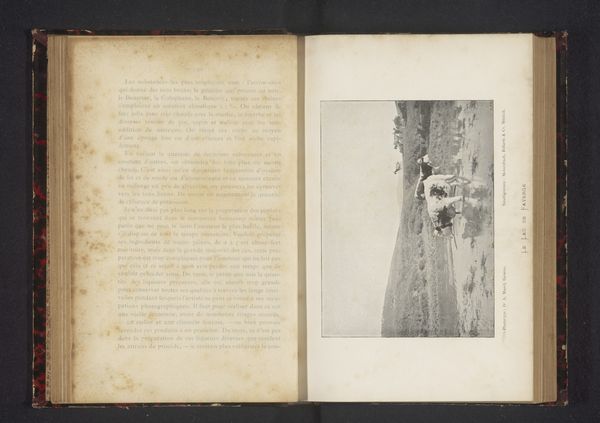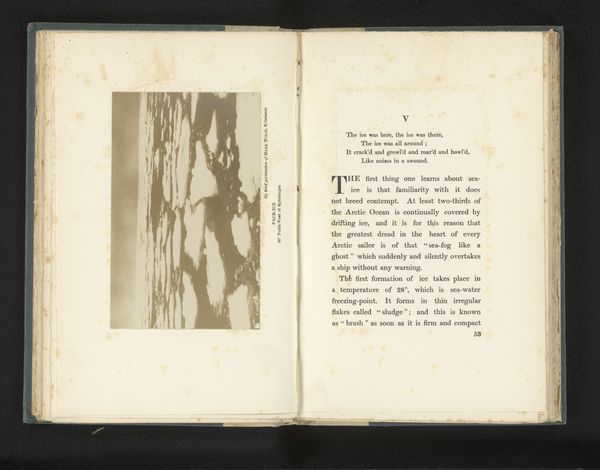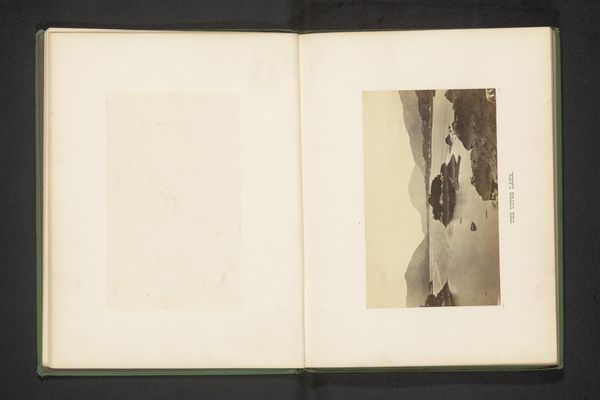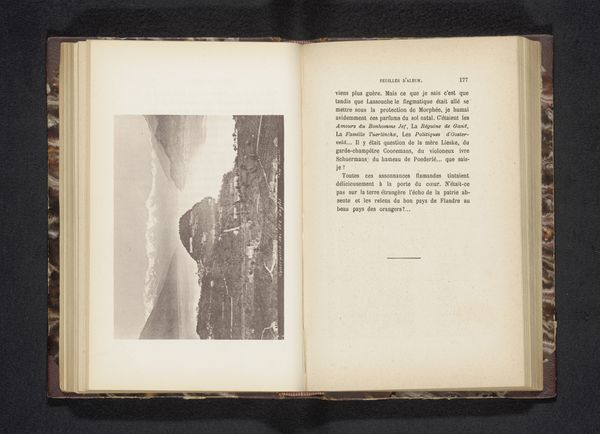
print, photography, albumen-print
#
still-life
#
book binding
# print
#
landscape
#
photography
#
watercolor
#
albumen-print
#
realism
Dimensions: height 109 mm, width 158 mm
Copyright: Rijks Museum: Open Domain
Editor: Here we have a plate from an album dating to before 1899 titled "Winters landschap met een huis en een waterpartij," so, "Winter landscape with a house and a body of water". It looks like a photogravure, capturing a solitary winter scene. I’m immediately struck by the composition - the low horizon line, the expansiveness of the sky, and how bleak the landscape feels. How would you interpret this image within its historical context? Curator: This piece, especially presented as part of a larger album, speaks volumes about the commercialization of art and imagery in the late 19th century. These albums were often curated to showcase photographic prowess or to cater to a specific audience’s taste for landscape or genre scenes. Consider its potential function: Was it aimed at tourists wanting a memento, or perhaps aspiring artists seeking visual inspiration? Editor: That's a perspective I hadn't considered. So, it’s less about the artist's personal expression and more about fulfilling a market demand? Curator: Precisely. And the choice of a winter landscape also aligns with popular Romantic ideals concerning nature's sublime power and the human relationship with it, even within constructed boundaries like these albums. Do you think the photogravure technique itself influenced the perception or reception of such images? Editor: Definitely! The tonal range achievable through photogravure lends a certain gravitas, almost mimicking the aesthetic of charcoal drawings. This may elevate a simple scene into something considered 'artistic', fit for display and collection. The print gives it validity. Curator: Exactly. It invites us to question the boundaries of "art" and "documentation" within the booming visual culture of the time. Thinking about it now, I wonder how people engaged with photo albums then. Editor: It does make you wonder if it served a function similar to social media feeds now. It was enlightening to explore how market forces shaped art and photography, which gave me an insight I had not considered before. Thank you.
Comments
No comments
Be the first to comment and join the conversation on the ultimate creative platform.

